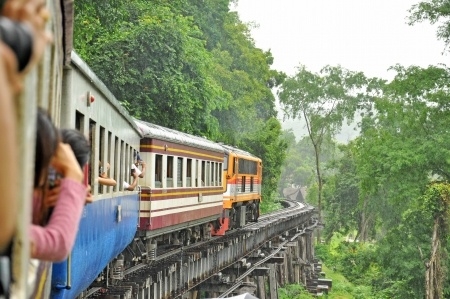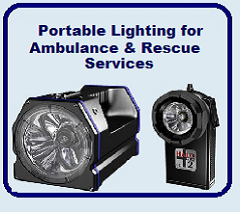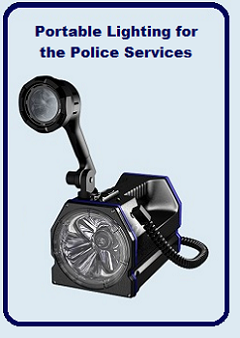What little child doesn’t dream of growing up to become Fireman Sam and rescue cats from tall trees?
Becoming a firefighter entails so much more than the ability to wear a jacket with shiny buttons – in fact, the shiny buttons have disappeared.
Recruitment for firefighters only happens once in a while, and a number of excellent serving firefighters have spent months, even years of applying before being recruited.
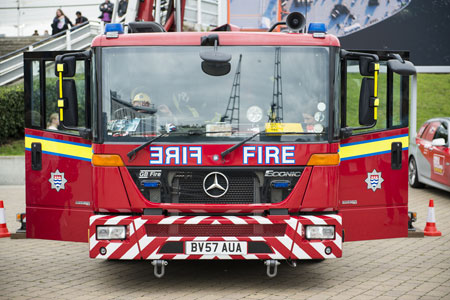
The Fire Services website details the criteria needed to become a successful firefighter. These include:
Personal Qualities and Attributes
- Commitment to Diversity and Integrity – understands and respects diversity and adopts a fair and ethical approach in all situations.
- Openness to Change – is open to change and actively seeks to support it.
- Confidence and Resilience – maintains a confident and resilient attitude in highly challenging situations.
- Working with Others – works effectively with others both within the Fire and Rescue Service and in the community.
- Effective Communication – communicates effectively both orally and in writing.
- Commitment to Development – committed to and able to develop self and others.
- Problem Solving – understands, recalls, applies and adapts relevant information in an organised, safe and systematic way.
- Situational Awareness – maintains an active awareness of the environment to promote safe and effective working.
- Commitment to Excellence – Adopts a conscientious and proactive approach to work to achieve and maintain excellent standards.
Physical Tests
- Ladder Climb
- Casualty Evacuation
- Ladder Lift / Lower Simulation
- Enclosed Spaces
- Equipment Assembly
- Equipment Carry
Psychological Tests
The tests are split in to the following two categories:
- National Firefighter Psychological Tests
- Working with Numbers
- Understanding Information
- Situational Awareness and Problem Solving
- National Firefighter Questionnaire
- Working with Others – works effectively with others both within the Fire Service and the community.
- Commitment to Diversity and Integrity – understand and respects diversity and adopts a fair and ethical approach to others.
- Confidence and Resilience – maintains a confident and resilient attitude in highly challenging situations.
- Commitment to Excellence – adopts a conscientious and proactive approach to work to achieve and maintain excellent standards.
- Commitment to Development – committed to and able to develop self and others.
- Situational Awareness – maintains an active awareness of the environment to promote safe and effective working.
- Openness to Change – is open to change and actively seeks to support it within the Fire Service and in the community.
Medical Tests
- Medical Records and Questionnaires – your medical records will be requested, and a medical screening form will need to be completed before further tests are permitted
- Hearing Test – you will sit in a sound proof booth wearing headphones and will be asked to press a button when you hear a range of sounds.
- Step Test – you will be asked to step up and down on a box whilst your heart rate is monitored and the rate of step is gradually increased. (May vary in different FRS’s)
- Lung Function – you will be asked to blow hard and long down a hollow tube until all your lung capacity is fully exhaled – a reading is taken and assessed accordingly.
- Physical Stamina – you will be asked to squat on a machine designed to test your back and thigh strength and then pull a specified measurement.
- General Tests – you will finally see the doctor who will test your reflexes and discuss your medical questionnaire with you.
- Chest X-Ray – some FRS’s will send you to the local hospital for a chest x-ray.
- Eyesight Tests – various vision and colour tests will be carried out.
If you still think becoming a firefighter is for you, then visit the UK Fire Services website where you’ll find a wealth of information for firefighters.
The Thameslink Programme is transforming rail travel in London. By the time the project is completed in 2018 there will be spacious new trains, every two to three minutes through central London at peak times.
The £6.5bn government-sponsored Thameslink Programme also includes rebuilding London Bridge station.
Almost 54 million passengers pass through London Bridge station every year, and the improved facilities will provide two-thirds more space for passengers.
The new concourse at London Bridge station will be bigger than the pitch at Wembley Stadium, and will include with new retail and station facilities.
The new concourse will allow passengers to access all platforms from one place.
Entrances on Tooley Street and St Thomas Street will connect the surrounding areas.
Tube and bus links will be improved and lifts and escalators will provide step free access to every platform.
The station work will help regenerate the wider area, building on the redevelopment which has taken place in recent years including the Shard, which funded a new bus station.
Thameslink video showing the work taking place at London Bridge station in April 2014
Don’t forget that White Knight are suppliers of:
- Rechargeable Flashlights
- Torches, Handlamps and Lanterns
- Worklamps and Signalling Lamps.
Call us on +44 (0) 23 9266 8624
Just found this fabulous site for train lovers – 100 Trains Project
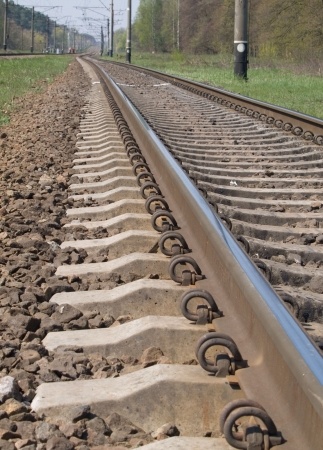 The 100 Trains Project started as one man’s personal journey to travel over 50,000 kms on the 100 greatest railway journeys and trains on the planet.
The 100 Trains Project started as one man’s personal journey to travel over 50,000 kms on the 100 greatest railway journeys and trains on the planet.
The plan has changed slightly, from one long non-stop journey to a series of shorter journey, but still a fascinating insight into some of the most spectacular railway journeys on earth.
Here is a list of the journeys taken from The 100 Trains website. There must be at least a few that we’d all love to do!
AFRICA
South Africa.
- The Blue Train: Pretoria – Cape Town
Tanzania.
- Tanzania to Zambia. Dar es Salaam – Kapiri Mposhi (Mukuba Express)
Zambia.
- Zambia to Tanzania. Kapiri Mposhi – Dar es Salaam (Mukuba Express)
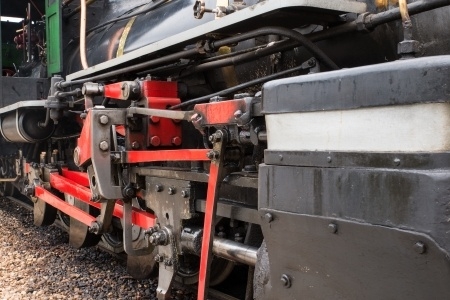 AMERICAS
AMERICAS
Canada.
- The Canadian, Toronto to Vancouver, Canada
- Canada. Jasper – Prince Rupert (formerly The Skeena)
- Canada. Montréal – Halifax (The Ocean)
- Canada. Toronto – Vancouver (The Canadian)
- Canada. Vancouver – Calgary (Rocky Mountaineer)
- Canada to US. Toronto – New York (Amtrak Maple Leaf)
- Canada to US. Vancouver – Portland (Amtrak Cascades)
Mexico.
- Mexico. Chihuahua – Los Mochis (Copper Canyon Railway)
Peru.
- Peru. Cusco – Aguas Calientes (Machu Picchu)
- Peru. Cusco – Puno/Lake Titicaca (Andean Explorer)
United States of America.
- US. Chicago – San Francisco (Amtrak California Zephyr)
- US. Chicago – Washington DC (Amtrak Capitol Limited)
- US. Los Angeles – New Orleans (Amtrak Sunset Limited)
- US. Los Angeles – Portland (Amtrak Coast Starlight)
- US. New York – New Orleans (Amtrak Crescent))
- US to Canada. New York – Toronto (Amtrak Maple Leaf)
- US to Canada. Portland – Vancouver (Amtrak Cascades)
China
- China. Hong Kong – Shanghai
- China. Hong Kong (Victoria Peak Funicular Railway)
- China. Shanghai – Shanghai Airport (Maglev Train)
- China to Tibet. Qinghai – Lhasa (Qinghai-Tibet Railway)
India.
- India. Kalka – Shimla (Himalayan Queen)
- India. Mumbai – Amritsar (Golden Temple Mail)
- India. New Delhi – Alwar (Fairy Queen)
- India. Metupulaiyam – Ooty (Nilgiri Mountain Railway)
- India. Pathankot – Joginder Nagar (Kangra Queen)
Japan
- Japan. Tokyo – Sapporo (Cassiopeia)
Malaysia
- Malaysia. Gemas – Wakaf Bharu (Jungle Line)
Sri Lanka
- Sri Lanka. Colombo – Kandy – Badulla
Thailand
- Thailand. Bangkok – Kanchanaburi – Nam Tok (The Death Railway – Bridge Over The River Kwai)
Vietnam
- Vietnam. Ho Chi Minh City (Saigon) – Hanoi (Reunification Express)
AUSTRALSIA
Australia
- Australia. Adelaide – Darwin (The Ghan)
- Australia. Adelaide – Melbourne (The Overland)
- Australia. Cairns – Kuranda (Kuranda Scenic Railway)
- Australia. Sydney – Perth (Indian Pacific)
New Zealand
- New Zealand. Auckland – Wellington (Northern Explorer)
- New Zealand. Christchurch – Greymouth (TranzAlpine)
- New Zealand. Christchurch – Picton (Coastal Pacific)
EUROPE
Austria
- Austria. Innsbruck – Klagenfurt (Austrian Tyrol)
- Austria. Klagenfurt – Vienna (via the Semmering Railway)
- Austria to Italy. Innsbruck – Verona (via the Brenner Pass)
Denmark
- Denmark to Germany. Copenhagen – Hamburg (Direct – by “Train Ferry)
- Denmark to Sweden. Copenhagen – Stockholm (via “The Bridge”)
England
- England. Carlisle – Settle (Settle-Carlisle Railway)
- England. Newcastle Upon Tyne – Carlisle (Hadrian’s Wall Country Line)
- England to France. London – Paris (Eurostar)
France
- France. Clermont-Ferrand – Le Puy-en-Velay
- France. Clermont-Ferrand – Nîmes (Le Cevenol)
- France. Nice – Digne-les-Bains (Le Train des Pignes – Provence)
- France. St.Gervais-le-Fayet – Le Nid d’Aigle (The Tramway du Mont-Blanc)
- France to England. Paris – London (Eurostar)
- France to Netherlands. Paris – Brussels – Amsterdam (Thalys)
- France to Switzerland. St.Gervais-le-Fayet – Chamonix – Martigny
Germany
- Germany. Brocken – Eisfelder Talmuhle (Brocken Railway [Brockenbahn], HSB [HarzerSchmalspurbahnen])
- Germany. Nordhausen – Wernigerode (Harz Mountain Railway [Harzerbahn], HSB [HarzerSchmalspurbahnen])
- Germany. Plauen – Gera (Elster Valley Railway – Elstertalbahn)
- Germany. Quedlinburg – Eisfelder Talmuhle (Selke Valley Railway [Selketalbahn], HSB [HarzerSchmalspurbahnen])
- Germany to Denmark. Hamburg – Copenhagen (Direct – by “Train Ferry)
Italy
- Italy. Tirano – Milan
- Italy to Austria. Verona – Innsbruck (via the Brenner Pass)
- Italy to Switzerland. Domodossola – Locarno (The Centovalli Railway)
Netherlands
- Netherlands to France. Amsterdam – Brussels – Paris (Thalys)
Norway
- Norway. Bergen – Oslo (The Bergen Railway – Bergensbanen)
- Norway. Flåm – Myrdal (The Flåm Railway / Flåmsbana)
- Norway. Oslo – Stavanger (The Sørland Railway – Sørlandsbanen)
- Norway. Oslo – Trondheim (The Dovre Railway – Dovrebanen)
- Norway. Stavanger – Bergen (by bus!)
- Norway to Sweden. Trondheim – Östersund
Poland
- Poland to Ukraine. Warsaw – Kiev
Russia
- Russia. Moscow – Vladivostok (Trans-Siberian Railway)
Scotland
- Scotland. Fort William – Mallaig (Jacobite Steam Train)
- Scotland. Glasgow – Fort William (West Highland Railway)
- Scotland. Inverness – Edinburgh (Highland Main Line)
- Scotland. Kyle of Lochalsh – Inverness (The Kyle Line)
- Circuit. The Highlands of Scotland by Train.
Slovakia
- Slovakia. Bratislava – Kosice
- Slovakia. Poprad-Tatry – Strbske Pleso
- Slovakia. Strbske Pleso – Strba
Spain
- Spain (Mallorca). Palma to Sóller (El Tren de Sóller)
Sweden
- Sweden. Östersund – Gällivare (Inlandsbanan)
- Sweden to Denmark. Stockholm – Copenhagen (via “The Bridge”)
- Sweden to Norway. Östersund – Trondheim
Switzerland
- Switzerland. Zermatt – St.Moritz (The Glacier Express)
- Switzerland to Italy. Brig – Domodossola
- Switzerland to Italy. St.Moritz – Tirano (The Bernina Express)
Ukraine
- Ukraine to Russia. Kiev – Moscow
Don’t forget that White Knight are suppliers of:
- Rechargeable Flashlights
- Torches, Handlamps and Lanterns
- Worklamps and Signalling Lamps.
Call us on +44 (0) 23 9266 8624
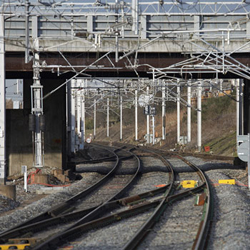
We’ve just come across this fabulous website British Railways Info that, in their own words “serves to lay out in a catalogue style, a number of key railway topics”.
This site covers British Railways from 1920 to 1970. It includes the history of railway companies, locomotives, rolling stock, train working, gazetteer, accidents and more.
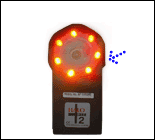 Our personal favourite is the page on Hand Signals and Hand-held Signalling Lamps throughout the British Railway system. It provides an interesting insight into hand signals made with flags and lamps.
Our personal favourite is the page on Hand Signals and Hand-held Signalling Lamps throughout the British Railway system. It provides an interesting insight into hand signals made with flags and lamps.
Well worth a read if you’ve got a spare moment – maybe on the train?
…and don’t forget White Knight are the people to talk to for any current hand-held signalling lamp requirements. Call us on +44 (0) 23 9266 8624
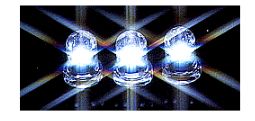 A reliable power source is vital for emergency portable lighting, and you need to be sure you choose the right battery and the right charger for your lights.
A reliable power source is vital for emergency portable lighting, and you need to be sure you choose the right battery and the right charger for your lights.
So what is the difference in batteries, and how do you decide which is best for your purpose.
| Battery | Description | Advantages | Disadvantages |
| Single Use Alkaline | The most widely used type of battery, named for their Alkaline electrolyte, these batteries became a popular alternative to zinc during the 970’s. | Long shelf life. Non-toxic and easy to dispose of | Short life when used in high-drain devices like digital cameras |
| Rechargeable Alkaline | Similar to single use alkaline batteries | Easy to recharge, and loses charge more slowly than other rechargeable. Also able to hold a charge for longer. more economical than single use, these are also more eco-friendly as they can be re-used a number of times | Alkaline rechargeable batteries have a lower capacity than other rechargeables. Also, limited lifespan, as every time they are recharged they lose a portion of their capacity |
| Single Use Lithium | Single use Lithium batteries are usually Lithium-photo batteries | The ability to cope with power surges makes lithium ideal for cameras and remote controlled toys. Lithium batteries have a long shelf life, lasting up to 10 years | Lithium batteries are usually far more expensive than other non-rechargeable batteries. |
| Rechargeable Lithium | Lithium-ion batteries are used to power laptops, cell phones, and camcorders. Rechargeable lithium-ion batteries have an excellent power to rate ratio. Lithium ion batteries are usually recharged either in a special recharger or when installed in the unit they power. | Long-lasting and usually easy to recharge without being removed from the unit they are powering Li-ion batteries cannot be manufactured in these sizes because they provide a higher voltage than standard AA and AAA batteries. However, Li-ion batteries are becoming the most popular battery choice for handheld power tools due to their high energy density (charge capacity) and rapid recharge rate. | Lithium batteries are usually far more expensive than other non-rechargeable batteries. Lithium batteries contain toxins and require specialist disposal |
| Nickel-Cadmium (NiCad) | The forerunner to the NiMH, NiCad rechargeable batteries are now nearly obsolete. Ni-Cad batteries were invented in 1899 and have been used in a wide variety of applications. Because they are not limited by size NiCad batteries can be used to power large items like computers. | NiCad batteries are considerably cheaper than NiMH alternatives. ower. | NiCad have a lower capacity than other rechargeables. Their charging time is relatively slow, at 14 to 16 hours, and they only produce 1.2 volts, compared with 1.5 volts offered by alkaline batteries. NiCad also contain toxic metals that require hazardous waste disposal |
| Nickel-Metal Hydride (NiMH) | NiMH rechargeable batteries offer a safer and more powerful alternative to NiCad. | Ni-MH are available in standard battery sizes, and especially in AA and AAA sizes, Ni-MH are available in standard battery sizes, and especially in AA and AAA sizes, Ni-MH batteries have a considerably higher capacity than Ni-Cd, by whatever measurement is used. Generally speaking, they hold about twice the charge of Ni-Cd batteries. | The main disadvantage of the NiMH is that it comes in different capacities, so you need to check that the NiMH batteries you are using have sufficient capacity for you device, and also that they are compatible with the charger you are using. NiMH batteries also have less voltage than alkaline batteries, and a high self discharge rate, and therefore a short shelf-life, so not suitable for rarely activated devices like emergency flashlights and smoke detectors. |
| Zinc | The original battery for use in portable equipment like radios and torches, Zinc-carbon and Zinc-chloride batteries have almost completely been replaced by alkaline batteries. . However, reductions in the price of alkalines have made both Zinc-Carbon and Zinc-Chloride batteries all but obsolete. | Initially a much cheaper alternative to alkaline batteries, available in AA, C, and D sizes | Far less capacity than alkaline batteries, and also more susceptible to leaking than alkaline batteries |
White Knight Lamps and Torches are available with a number of battery options, and we supply a comprehensive range of chargers for the White Knight and Halo Plus2 ranges.
· Halo Plus 2 Chargers
Featuring three types of battery chargers – The Standard range, the Hi-Tech range and the Hi-Tech Fast range – all are available singly or as five way systems for multi-users.
· Standard Range
To compliment the Halo Plus2 range of torches a range of charging options is available. From surface mounted to in-vehicle, all are available in a number of designs to meet your requirements.
- Charges batteries in 14-16 hours
- Available in 100/230V AC mains or 12/24V DC versions. DC versions contain an automatic low voltage sensing cut-out to avoid flat vehicle battery
· Hi-Tech Range
A range of features ensures accurate charging levels that balance and equalise the batteries. A maintenance/standby charge ensures batteries remain in top condition if left unattended over long periods.
- Charges batteries in 10 hours
- Time accelerated charge of 8 hours achieves 95% of capacity at 10 degrees C
- Extends battery life by up to 60%
- Increases available capacity, giving a longer duration of light
- Eliminates the possibility of memory effect by use of a specially designed electronic pulse charger circuit controlled by microprocessor. The result is multistage software regulated charging which is sensitive to the batteries requirements
Output voltage and current regulated to ensure safe charging at low temperatures These features enable the Halo Plus 2TM torch to be left on charge for prolonged periods of up to three months without damage to the batteries (and safely for up to one year).
· Ni-Cd/Ni-MH Fast Charger & Halo Plus2
Environmental considerations have led to the introduction of Nickel Metal Hydride battery options for the Halo Plus2 range of rechargeable torches. To complete our product range we have added fast chargers for both Ni-Cd and Ni-MH batteries.
The fast charger design is based on the very latest technology and incorporates features which optimise battery performance, life and safety. The charge time will depend on the capacity of the batteries, but on average, 3 hours should see most batteries fully charged (at 10 degrees C). The charger then switches to a trickle charge or standby mode.
Polarity and voltage surge protection is now standard. The circuit is also provided with checks for charging at low temperatures, if the cells are too cold they will not be charged until their temperature rises.
The charger circuit is designed to operate at 12 – 30 Volts, for 230V charging an optional mains adapter is available. For vehicle charging there is provision for sensing the vehicle battery voltage, the circuit will switch itself off before the battery reaches the point of not being able to start the engine.
For more information about batteries and chargers for portable emergency lighting please visit our Charger page or call us on +44 (0)23 92 668624
Some think it is vital to the future of our country, some thing it is a waste of money and resources, and some of us are not quite sure what it is – we just know it’s caused a bit of a fuss!
Well the official HS2 website describes it as “The High Speed Two rail network will bring the UK’s Victorian railway infrastructure dramatically into the 21st century, releasing space on crowded lines and bringing the whole country closer together.”
 The website includes the HS2 Ltd Phase Two Consultation, which launched on 17 July 2013 and will run until 31 January 2014. This consultation seeks your views on the proposed high speed rail route, as well as on the sustainability impacts of the proposed line of route.
The website includes the HS2 Ltd Phase Two Consultation, which launched on 17 July 2013 and will run until 31 January 2014. This consultation seeks your views on the proposed high speed rail route, as well as on the sustainability impacts of the proposed line of route.
The website has a wealth of other information, including facts, figures and dates relating to the development of HS2, and even The Exceptional Hardship Scheme (EHS) which enables those who have an urgent need to sell their property, but can only do so at substantially reduced prices as a direct result of the announcement of the HS2 Phase Two.
On the other side of the fence are STOP HS2 who believe it HS2 will never deliver on its promises, and cost far more than the official budget suggests. A recent post on their website claims that a study undertaken by the Tax Payers Alliance has shown that a total of £302m was paid out between January 2011 and October 2013.
This includes £104,891 to run the website for 10 months, and aaroundt £9,000,000 to recruitment agencies, despite the fact that by the end of October 2013 HS2 Ltd only employed 557 staff.
Another group called 51M “is an alliance of councils that has come together to challenge the evidence base about the HS2 project. They are known as “51m” because that represents how much HS2 will cost each and every Parliamentary Constituency…£51million.“
So, all in all a rather complicated and controversial project that will almost certainly consume far more money that originally anticipated. But will it be money well spent – only time will tell…
Christmas – a time of big meals and big gatherings –and sometimes the need to get away from both!
 There is something romantic about going for a bracing walk after a lazy day of over-indulging, especially if it includes all the family – the kids, the dogs and grandma too!
There is something romantic about going for a bracing walk after a lazy day of over-indulging, especially if it includes all the family – the kids, the dogs and grandma too!
If you are lucky enough to be in the countryside with beautiful then it is an opportunity not to be missed!
A lovely long walk that ends back in a warm, cosy home with a hot chocolate or a glass of something equally warming is as wonderful as it sounds.
However a lot of people with little experience of walking in the hills and mountains, swept along in a flurry of enthusiasm can find themselves with a very different ending to their walk!
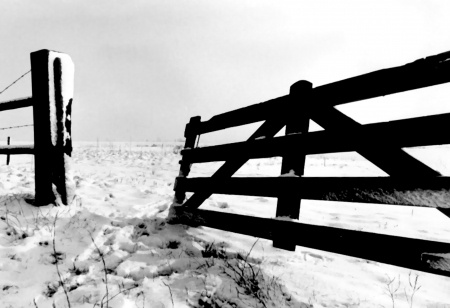 If you are planning a walk in the great outdoors, and you are not an experienced walker the please head over to the Mountain Rescue England and Wales for some advice BEFORE you set off.
If you are planning a walk in the great outdoors, and you are not an experienced walker the please head over to the Mountain Rescue England and Wales for some advice BEFORE you set off.
Their page on Mountain Advice offers some practical, useful tips that will keep you and their heroic volunteers home and safe at Christmas.
Enjoy the walk!
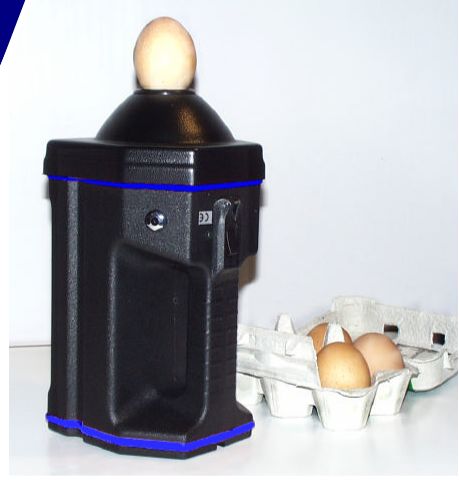
The White Knight Egg Candling kit can save you time by allowing you to quickly and easily identify eggs that may be diseased or infertile.
Avoid incubating these eggs by inspecting them with the White Knight WK-5 Trio Candling Kit.
This portable rechargeable lamp is easy to use and effective at illuminating eggs.
Successfully used by DEFRA Egg Marketing Inspectors our egg inspection kits are lightweight, yet robust, and are supplied with both mains and vehicle chargers, egg carrier and shoulder trap.
The White Knight WK-5Trio also doubles as a powerful 20 watt handlamp.
Visit our White Knight page or call us on 023 9266 8624 to find out more about this easy to use and versatile egg inspection kit.
The White Knight EEZYVIEW SOCO lamp uses high intensity white light emitting diodes to provide improved lighting for scenes of crime.
The EEZYVIEW uses InGaN chips coated with YAG inorganic phosphor and operate at a colour temperature of approximately 6500K (which is considered pure white) and has an output of 4,000 millicandelas.
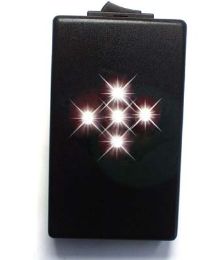 White Knight EEZYVIEW includes the following features:
White Knight EEZYVIEW includes the following features:
- Low battery drain
- High reliability and a lifetime of 40,000 hours.
- Long-lasting colour (The colour of emitted light will not deteriorate)
- Tolerates wide temperature fluctuations
- Resistant to UV degradation.
- Even light pattern for clear legibility without light rings and black spots.
- Standard 9V Duracell MN1604 alkaline battery
- Small and lightweight – 6×10.5×3 cm and 10g – fits easily in most pockets
“It’s the best lamp I’ve ever used for finding footprints in dust – saves a fortune on Esla Lifters”

Visit our White Knight page or call us on 023 9266 8624 to find out more about this useful little SOCO assistant
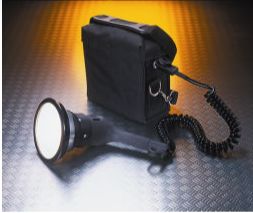 Our 100 Watt Portable Flood Lamp Kit has been developed in conjunction with major police forces across the UK.
Our 100 Watt Portable Flood Lamp Kit has been developed in conjunction with major police forces across the UK.
The SL-50 hand-held floodlight contains a powerful 12 volt 100 watt halogen bulb in a hand held, diffused reflector unit that is lightweight and easy to carry.
It is capable of thoroughly floodlighting a large room for investigation, photography, emergency rescue situations or other sites where larger floodlighting equipment would be difficult to locate.
It is the ideal lamp for:
- SOCO
- Photography
- Search and accident investigation
The SL-501 Lightweight Battery Pack provides the power source for the SL-50.
This is a deep cycle 12 volt 7.2 Ah Gel Lead Acid Battery. Housed in a tough canvas case with a sturdy shoulder strap, the SL-501 battery pack is connected to the SL-50 hand-held lamp with screw locking military style connectors.
Additional Battery Packs are always available and we also stock a mains charger unit – the SL-503 – for use with this kit.
Call us on +44 (0)23 92 668624 to order your SL-50.
